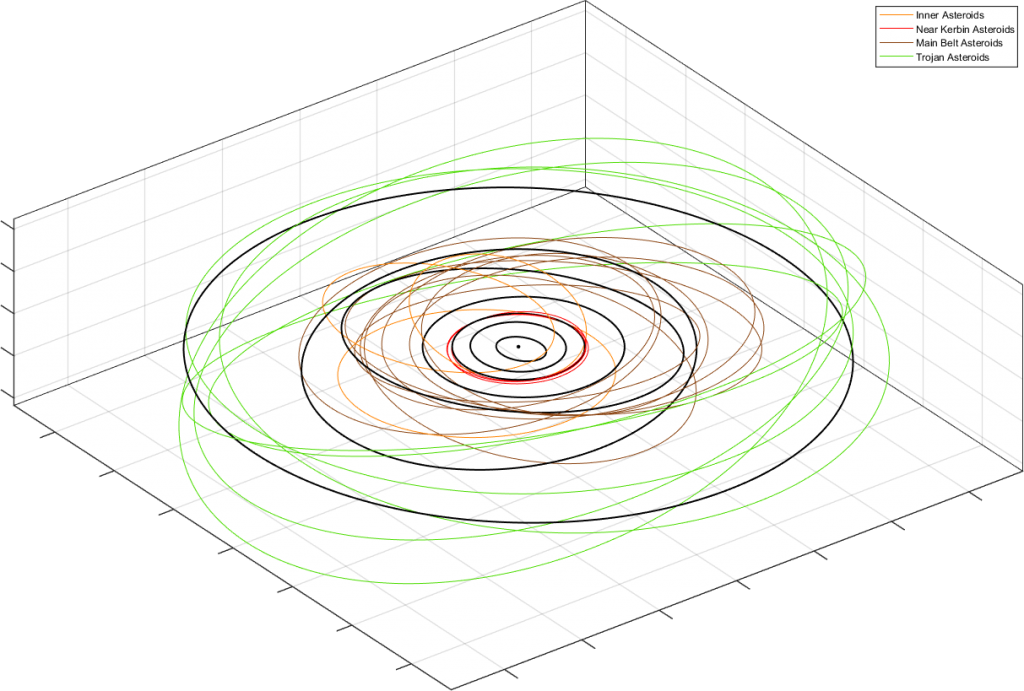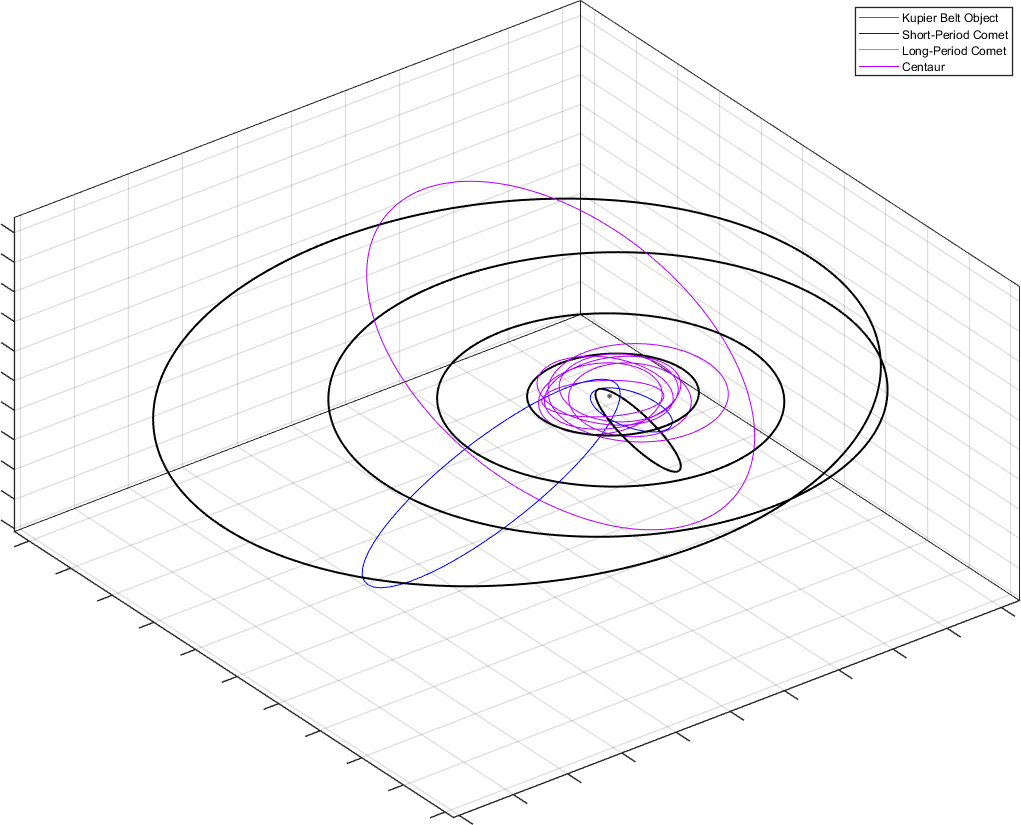|
Progeny Mk6-I Fails First KSP Mission
After a successful initial lift off last week, the first Kerbal Sounding Project mission of 2020 seemed off to a great start. Less than a minute into the flight however an issue arose when the second stage booster failed to fire properly. Although it did ignite, the burn was not maintained and the engine flamed out less than two seconds later. Although the flight computer immediately dumped the stage and waited for mission controllers to signal for the 3rd stage to ignite and continue the ascent, the decision was made to abort the mission. While the rocket could have still made it up into space, it would not have been high enough to satisfy the main mission goal of reaching the inner radiation belt. The abort also made it easier to recover the third stage, which splashed down intact only 20km offshore rather than somewhere out in the middle of the Kerblantic far from both KSC and where our recovery ship was stationed even further downrange.
The investigation into why the second stage motor failed is still ongoing. Unfortunately the booster was not able to be recovered intact, crashing into the water at upwards of 230m/s, so the only thing we can do is work backwards through the long chain of events from final integration to initial production and see if any signs of improper handling or manufacturing pops up. While we do not like to speculate, some sources have leaked to KNN and we agree that the likely culprit is either a bad mixture of the solid propellant or an error in the casting process that cut off combustion. As we work backwards, Luciole Space Systems (who bought the original engine manufacturer Umbra Space Industries earlier this year) is conducting a full inspection of their booster factory.
Despite the failure, the USI boosters remain very reliable overall and there have only been 2 instances of problems over the past 54 launches. The first was indirectly caused by a poor interstage design in the Progeny Mk2 and the second was a bad ignitor that failed to set the engine off on the Progeny Mk5 Block I. While the next KSP mission was delayed so that technicians could take a close look at both the first and second stage solid motors, no apparent issues have been found. If the fuel is indeed bad we won’t know until the booster is lit off, so the only thing we can do is try. The launch remains on schedule for next Tuesday.
Kerbin II Mission Extension Cancelled
Still holding stable in its orbit, Kerbin II has saved a lot of fuel that was planned to be used for station-keeping in the event that enough atmospheric drag existed in Low-Kerbin Orbit to slowly pull the spacecraft down. With its systems still in perfect working order and now that the mission has confirmed that orbital decay is not an issue, at least under current conditions of what we acknowledge to be a dynamic space environment, a mission extension was proposed to keep the satellite up throughout the month of December.
The plan was to use the cold gas engine to raise the apoapsis, or highest point, of the craft’s orbit to reach the inner radiation belt. The objective here was twofold as the science instruments would have been able to take new readings and the craft itself would have been subjected to higher levels of radiation than it was designed for to give the hardware a stress test. Because it would only be dipping in and out of the belt for short periods of time, it would need to stay in orbit longer to collect enough data to make the whole endeavor worthwhile.
However while it was determined the orbital raise could be completed, not enough fuel would have remained for a safe de-orbit at the end of the mission. Going higher means that the vessel would be coming down faster with more stress and heat than we would like. Even if we could just dip it into the atmosphere to slowly brake and return, the stress from each pass could add up and presents too much of an unknown. Ultimately the mission’s success relies on recovering the spacecraft so that we can learn more about how it fared while in space and during re-entry so it can better inform the design of future satellites. The mission is scheduled to end on the 17th, when it will be de-orbited and recovered near the Kongo Research Base.
ATN Database
The latest update for the Asteroid Tracking Network database is available here, containing 6,064 asteroids and 1 updated with new observation data. Here are the 30 asteroids that were discovered this past week.
 |
 |
From the Desk of Drew Kerman
Out of Character Behind the Scenes stuffWritten on 12/4/20
Well when I’m not breaking controllers playing Rocket League I’ve been losing myself in fighting off the Mongol invasion in Ghost of Tsushima. Really wish I had gotten around to this game sooner though since Cyberpunk 2077 is now right around the corner. Also I’m part Japanese so having such an expansive game about feudal Japan is extra enticing to me, I’m very much attached to this part of my heritage. Through it all though I’ve managed to still keep on top of KSA stuff and although I’m putting this Ops Summary together day-of I have the whole month of December outlined and planned out. It will help a lot having two weeks “off” from KSA operations that I can just breeze through – although a lot of 2020 in review stuff will take up a good chunk of that time. Really excited to see what I can pull off in 2021 with the Ascension Mk3, but right now I have more pressing issues like dusting off the Progeny Mk6…
Mk6-I mission
First hurdle was getting this working in KSP 1.9.1 since the rocket was last flown in 1.5.1 – thankfully there weren’t any huge issues although there were some than needed to be worked around. For one the RealChute patch to use with the USI nose cone had completely broken (it had issues even in 1.51) and I just didn’t feel like even dealing with it so I stripped out the chute entirely and just attached a small radial RealChute to the nose cone. This however caused mass issues and made me realize after some investigation that the nose cone, with the chute, had been massing only 8kg this entire time! What?! Crap well, instead of dealing with a massive retcon I just decided to lower the mass of numerous parts in the third stage to compensate for the extra mass of the parachute so that everything balanced out and the rocket massed the same as the one flown last year in 1.5.1.
Then came the engine failure, thanks to Kerbalism and its part failure feature. That’s cool though since I do enjoy having problems like this to deal with from a story perspective but uggh so much extra work…
So after the failure I had to decide how to handle it then refly the mission again with the procedures in place to deal with the problem. This is more time-effective than working up actual fail-safe kOS code for my flight computer, although I would also be into that if I did have the time. Of course the part failure is random and is not seeded to the vehicle ID or anything like that so it’s not reproduceable so I had to also set the engine up to fail shortly after ignition. You can’t shut down SRBs in the game so I had to reduce the amount of fuel. This reduced the mass so I had to find some way to add it back so the initial flight profile wasn’t messed up. I considered the inline version of the NRAP test weight, which I could clip into the rocket, but it threw nothing but nullrefs when I tried to set its mass. My second try was the small solid motors I use for the LES and luckily adding four of them and reducing their fuel amounts by one notch exactly equaled the missing mass of the fuel I removed from the second stage SRB.
The AoA trigger that made the second stage have to be lit off manually did not occur on the initial flight, but became persistent during later retries as I made the above adjustments so I kept it since it helps with the idea of wind being an issue.
Kerbin II extension
I actually totally forgot to plan to take a picture with Kerbin II as I breezed through its week of operations but it did work out using the excuse of fuel savings and I really did spend time in Mission Architect trying to determine if getting the vessel up into the radiation belt was possible. It really isn’t, and for the exact reasons specified. Ah well, would have been nice to pull some more science from the mission and have it be a bit more dynamic than just loitering in its same orbit the whole time but also that means less work to end out the year, which has been trying enough as is ya know?







